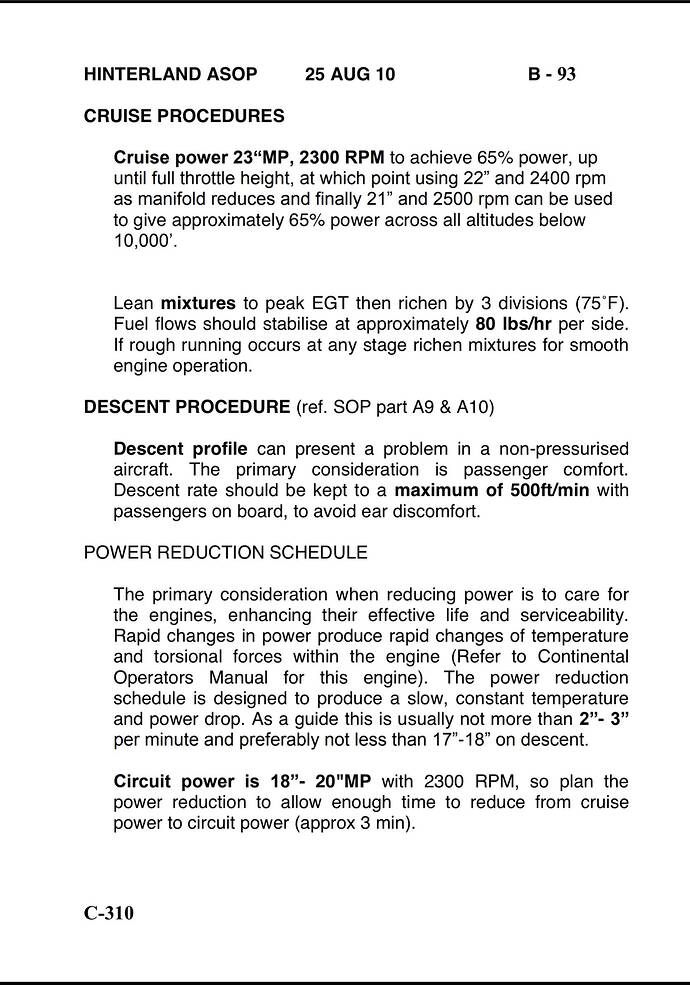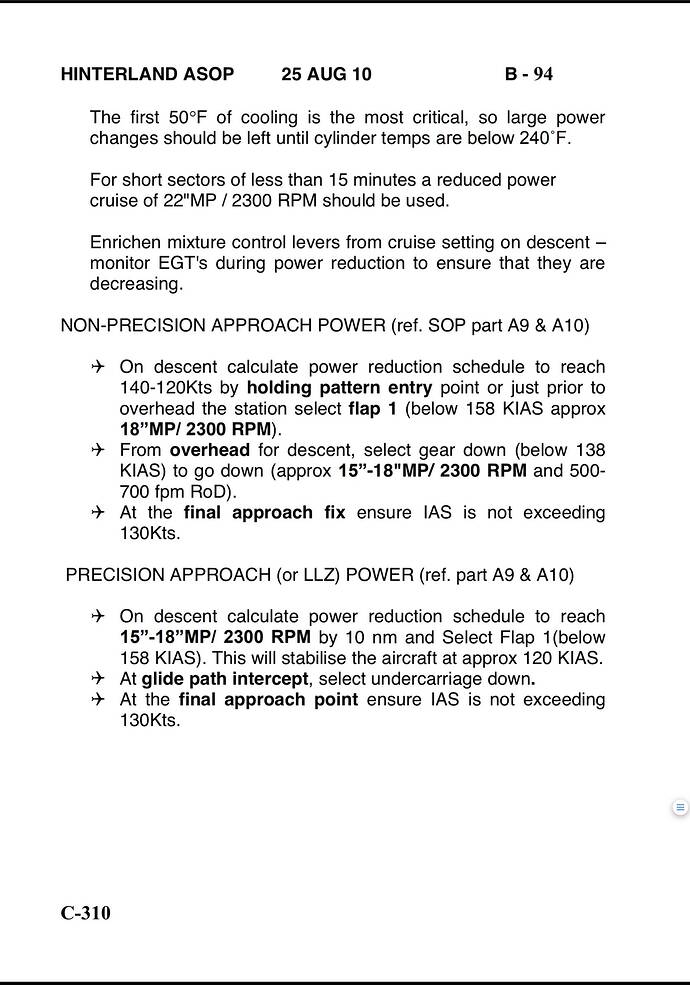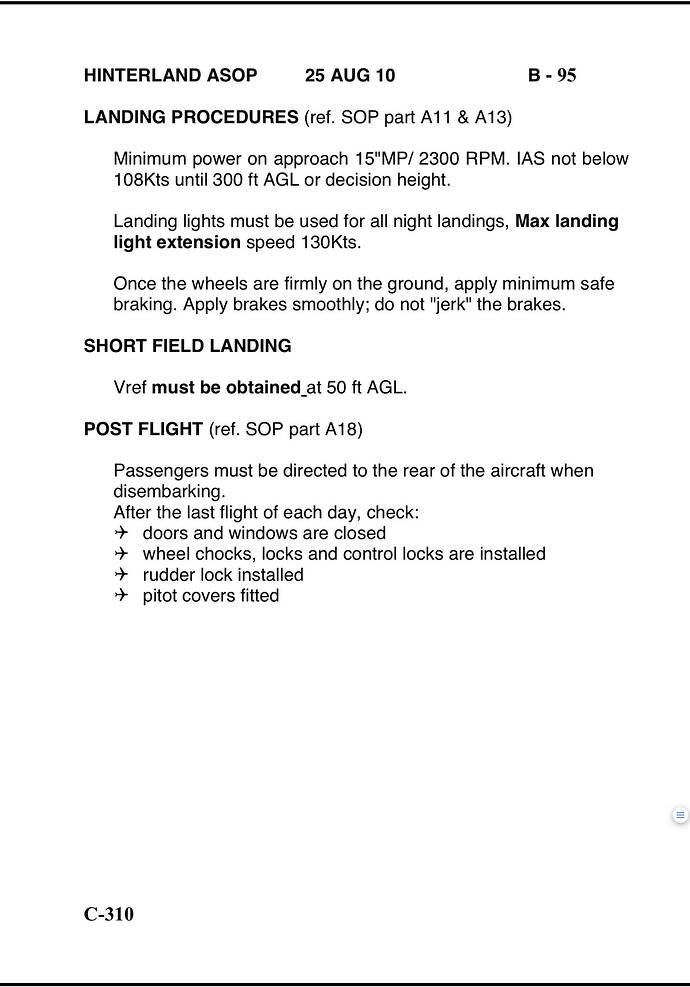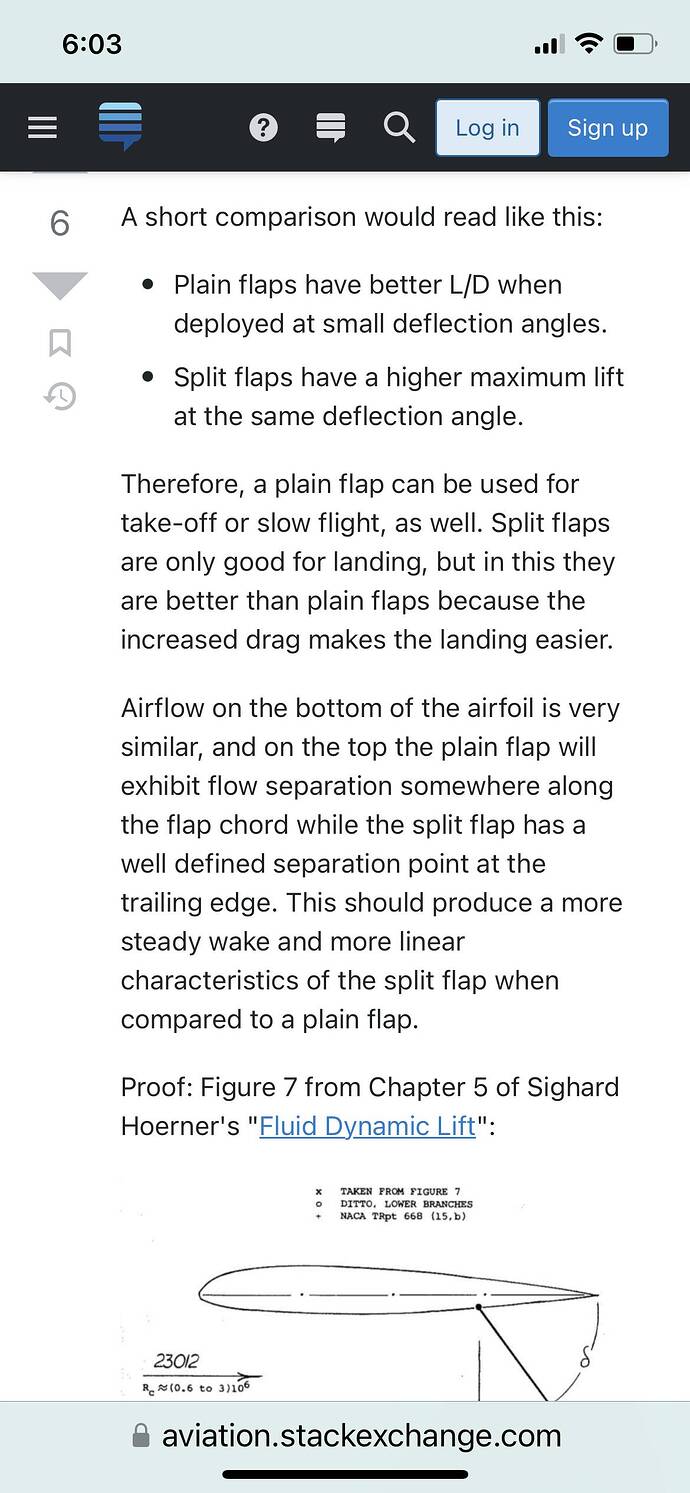250 lbs fuel in the tanks, two average people, a couple of 1-week vacation bags.
Airport altitude is 1887 ft.
Just to be sure, as I don’t want to go fishing through multiple videos, you mean two people total, not pilots and two passengers? If 2 people, that sounds like a medium load, if 4, that would be heavy!
I find from my research and experience with this plane in sim the flaps don’t generate a lot of lift. They work a bit like speed brakes. This also seems to be true with the real life version.
So for me, landing is a bit different than many planes.
I tend to keep flaps UP and control my speed with MP. I drop the flaps late on final to help pull me out of the sky and down to the runway. And the plane lands a bit hard. It is a different experience than most planes I fly.
Drop the flaps too soon? You need to compensate with more MP. A medium or heavy load and you might really need to compensate.
I cannot say for sure this is exactly the same as the plane IRL, but it does seem close to what real pilots report. The flaps aren’t great for lift. Like, we don’t use them for takeoff. And I rarely, RARELY use full flaps, as they can just pull me right down unless I go in with almost full power. I only use full flaps if I need to quickly reduce my speed.
Does anything I have just typed ring true to you?
From your comments I have suspected you might be using too much flaps, or might be extending them too soon expecting that traditional boost in lift that flaps on most planes would generate.
To be clear, landing the 310 is something I do very much by feel rather than strictly by numbers and the 310 does seem to be quite impacted by weight, so my MP can vary depending on if it is light or heavy. When heavy, it does need more power.
I quite like this about the 310 because it is a unique way to land! Flaps don’t lift, it needs some power while coming down, and, it lands hard.
Hi, and yes it is a bit different isn’t it?
If the descent and approach are carried out correctly then you won’t need too much power coming down at all in the real aircraft, but that said, this can be a draggy plane if you don’t plan your descent well.
If you use my numbers from above you guys can practice this:
Best to use only 1 notch of flaps for most of the descent and final approach, only going to full flaps at around 500agl…but again this depends upon the approach…if you are coming in on a very steep approach then you can use full flaps earlier to help get you slowed.
If you are using my modified numbers posted above then you can try this:
To begin slowing the aircraft bring the throttles back to 17"MP while holding your current altitude, and wait until you slow to below 158kias, then bring down 1 notch of flap.
At this point the aircraft is still slippery and will not slow well until you get the gear down, but you have to slow her down to 138kias before you can do this so once that first notch of flap is in do not start descending yet in earnest…instead begin a very shallow descent like maybe 200-300ROD until you can get the gear down. Leave the throttle at 17" this entire time…can you bring them back further to help you slow quicker to say 15"?..well maybe, but due to shock cooling be careful…I’d rather leave mine at 17" hehe.
I’m in the habit of leaving the props at around 23-24rpm for as long as possible during final as there’s less drag that way, I typically go full prop somewhere within the last few miles of final…but if you’re coming in hot you can push them forward earlier to help you slow a bit more.
If you use my numbers and practice, it is likely to find that you’ll actually need more torque on final with the Kingair 350 now ![]()
Hershey Bar Cherokee apparently landed like that. Big chunk of power needed if full flaps are deployed.
The old saying was " … the Cherokee acquires all the flight characteristics of a house brick when flown with full flaps and no power"
I owned a '73 Challenger, which was basically an Archer (lengthened fuselage and extra window) with the Hershey bar wing. Granted, I do like to land on the top side of the glide slope, but, I would apply one notch on Downwind at the numbers, 2nd notch on Base, and then at probably 1.5 to 1 mile final apply full flaps on landing, unless there was a generous crosswind. As I approached the end of the runway, however, I’d pull all power and flare. Through it all, until I got over the fence, I tended to keep between 1700 and 1900 rpm.
I never felt like it dropped like a brick. If I kept even a slight amount of power in over the numbers, it would float pretty far. Granted, my goal on landing is usually to land in the shortest distance possible. In fact, it’s been quite a few years, but I felt like the Hershey bar wing is more floaty than the tapered wing of the Warriors I rent now.
Don’t really have a dog in this fight. The 310 flies “believably” to me compared to other light GA I’ve flown.
But, just so we’re speaking accurately, and from what I understand, split flaps don’t produce less lift than plain flaps, they produce more. But they also produce more drag and differently than plain flaps.
From aviation stack exchange:
This is about the shortest explanation I’ve heard for this. I just thought it was important that we don’t conflate split flaps with pure speedbrakes.
Are you by any chance use a recorindg app such as Skydolly or similar (Flight recorder is another app). I got problems with SkyDolly, even though the dev told me it could not be because of the app. But as soon as i quite the app, the lights worked for me: Might have been a total coincidens though.
I love the supplemental info folks are posting about the C310’s flaps.
I’m just quoting myself because I took pains to make clear the plane’s flaps don’t generate as much lift as other flaps, and they work a BIT like speed brakes.
I do not think they generate zero lift, and obviously they are not speed brakes. But if you are used to flaps that allow you to stay in the air at significantly slower speeds, or take off in shorter distances, or expect a split flap to generate lift like a full flap, you may want to use another plane! These split flaps create drag without compensating with a lot of extra lift.
I suspect you may be trying to fit a square peg into a round hole. In other words, you may be expecting them to work differently than they are meant to.
Again, thanks for the supplemental info. It is cool stuff!
Out on Xbox!!! Along with the Porter.
what a day!
What do you all use for cruising altitude and fuel flow? It seems that 7500 feet at 65% power works well, but even when running 75 degrees Lean of Peak I’m still burning about 30 gallons per hour.
FYI: For Xbox I was informed that there is another add-on install needed or the WASM code cannot run. The Free DLC you need to download is called “Microsoft Flight simulator: Add-on support”
Question - For us Xbox simmers that currently have and love the C414, why should I buy this plane as well? Is there enough of a difference in the flying experience? Just curious for those that own both. Thanks!
As I start to learn this aircraft, question for the thread regarding the realism and wear & tear settings. Are these independent to the aircraft or do I need to have the sim’s aircraft/engine stress enabled as well for the aircraft toggles to function correction? I’d like to use the realism, but the sims stress settings can be weird to deal with (crashes for opening the window for example).
Thanks! I tried that last night as well and had much better fuel flow results.
This topic was automatically opened after 24 hours.
Interesting… Their post on this a few weeks ago was very confusing. In the announcement for the Xbox WASM Helper addon, it sounded like the addon would be automatically loaded on Xbox users’ consoles when SU12 was released and installed. Was this not the case?
The post was pretty poorly written. It could have been interpreted either way, really.



